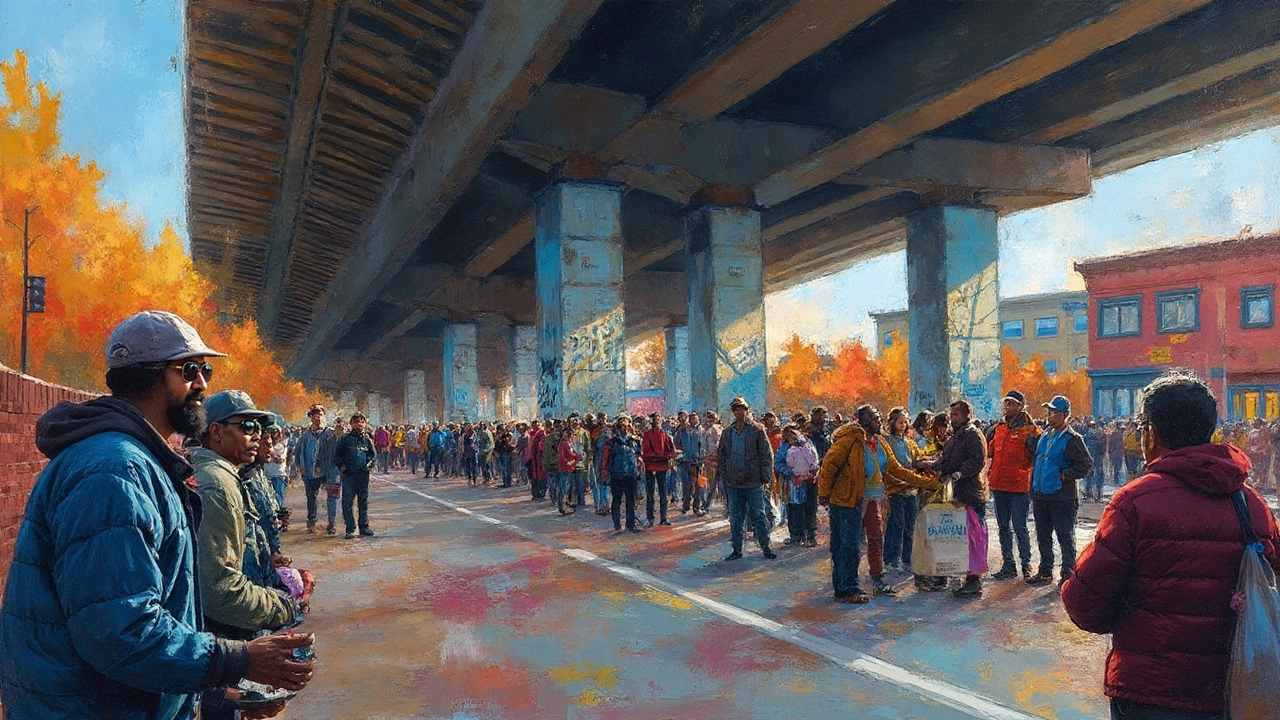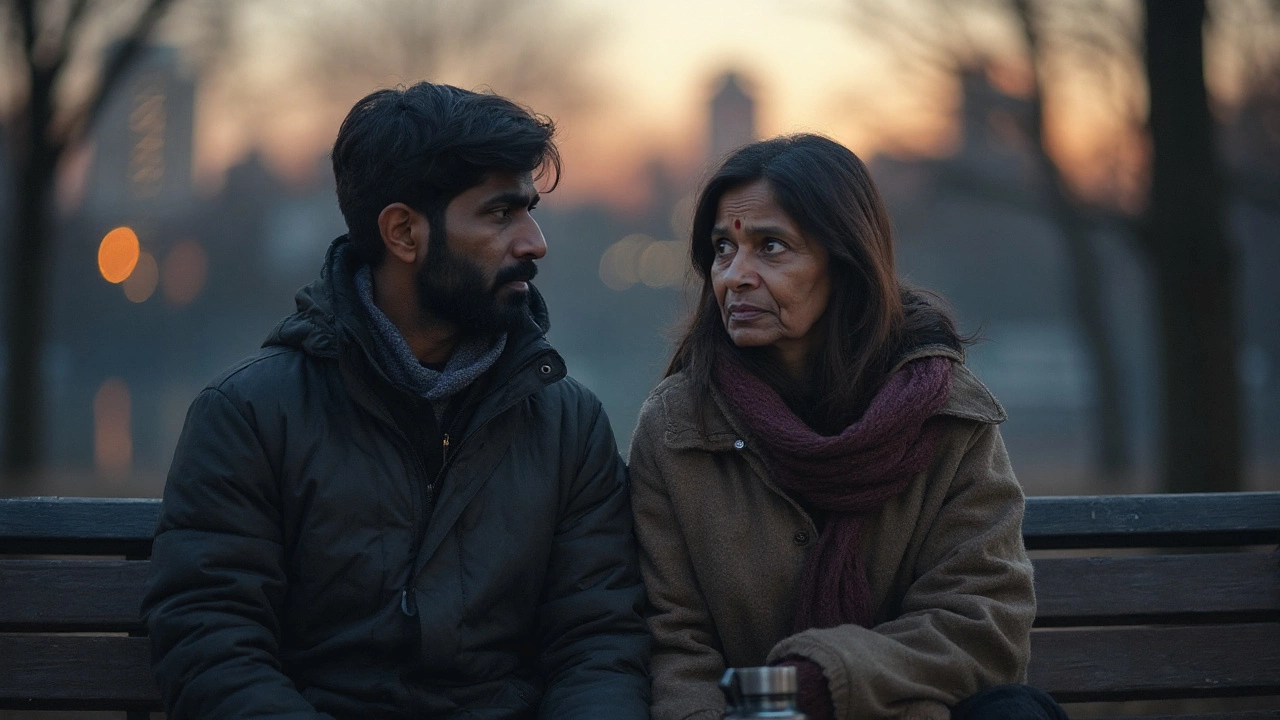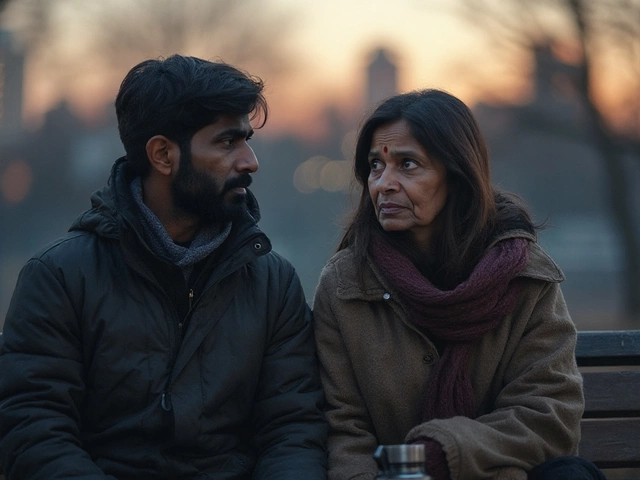If you’ve ever driven through Broad Street or caught a glimpse under the overpasses on I-95, you’ve probably wondered where folks facing homelessness go when the weather turns nasty or the cops come through. Richmond, VA, isn’t immune to what’s happening in cities across the country, but there’s something raw and real about the way people get by here. From church basements to public parks, from the established shelters to hidden tent communities, the city’s patchwork of survival is eye-opening and way more complex than most people think. So, what’s really happening when the sun sets and benches clear out?
Hidden Corners: Where People Really Sleep in Richmond
Every city’s got its obvious choices—the shelters that open their doors at dusk and turn folks away when their cots fill up. Richmond has around a dozen traditional emergency shelters, but even at full throttle, these only cover a portion of the city’s homeless. The shortage is stark. As of January 2025, roughly 773 people in the Richmond area were considered homeless on a single night, according to annual point-in-time counts, while shelter beds remain below total demand, especially in the winter.
Where do people go when there’s no shelter space available? Street corners and parking garages aren’t just scenes from gritty TV dramas—they’re daily life for some. You’ll find people tucked behind dumpsters, curled up with sleeping bags behind the ballpark, or under Main Street Station’s overhang. There are less visible places too—a handful of small tent encampments dotting the riverbanks behind the James, out of sight unless you know the wooded trails. Some cluster behind gas stations on Hull Street, others dig in near abandoned warehouses in Shockoe Bottom.
Parks like Monroe and Chimborazo often see people camped out, though city ordinances and periodic "clean sweeps" force folks to move on. Many turn to 24-hour businesses like bus stations or diners, nursing a coffee all night. Libraries are popular during daytime hours—if you walk into the Main Library on Franklin St., you’ll see folks using charging stations, computers, or just getting out of the heat. Safety is a big concern, though; people sleep in shifts, keeping an eye out for trouble. It’s not just about roughing it out—it’s about staying alert to theft or harassment.
Motels become fallback shelters, especially if someone can scrape together a few bucks through day labor, recycling cans, or help from a charity. Richmond does have a few groups that work to place people in motels short-term, like Homeward and the Daily Planet, but the money goes fast. The city’s warming and cooling shelters pop up when the weather gets really rough—operated by the city or local churches—offering mats, basic meals, and a few hours of peace.
If you look at actual data, you’ll see where the needs really pile up. Here’s a quick snapshot showing the reality:
| Location Type | Estimated Daily Usage (2025) |
|---|---|
| Emergency Shelters | 310 |
| Motel Vouchers | 50 |
| Street/Tent Encampments | 280 |
| Transitional Housing | 70 |
| Staying with Friends/Family (Temporarily) | 63 |
The variety of places people stay just hammers home that there isn’t a single reason or single solution. Sometimes it’s about personal safety; other times, pets aren’t allowed at shelters, or someone’s coping with mental illness and can’t handle a crowded dorm room. And frankly, some folks say they have more autonomy and less drama living outside or with a group they trust in an encampment than dealing with rules at some shelters.

Richmond's Shelter System and Who It Reaches
Shelters are vital, but they’re just one piece of the puzzle here. The city’s largest emergency shelter, run by CARITAS, focuses on men but scrambles to expand capacity during cold snaps. Family shelters are in even higher demand since most don’t split families. Commonwealth Catholic Charities and St. Joseph’s Villa offer more than a bed; they tie in services like job coaching and housing placement. Youth-focused groups like Advocates for Richmond Youth do outreach for teens and young adults—especially LGBTQ+ kids who, for all sorts of heartbreaking reasons, can’t stay at home.
During COVID-19, Richmond got creative with hotel placements for those at risk or quarantining, and the city leaned on churches and volunteers to set up pop-up shelters. Those ideas stuck, and some have turned into semi-permanent programs. While the city’s official shelter registry lists about 360 year-round beds, the need on some winter nights jumps to 500 or more beds. That leaves a glaring homeless Richmond VA gap every single night.
Meal programs fill a hole, too. The Salvation Army, FeedMore, and local churches rotate breakfast and dinner services. At nearly every major shelter or meal program, you’ll find on-site caseworkers who can connect folks to housing applications, mental health care, or substance programs. The trick is sticking with clients who are often on the move or leery of the system. Street outreach teams—a mix of city workers and private orgs—literally look for people after dark, offering everything from hygiene kits to rides to shelter or medical attention. The Homeless Point of Entry (through Homeward) helps with coordinated access to programs, but there’s always a catch: paperwork, long waits, or criteria that some can’t meet.
Transitional housing is a step up from emergency cots—here, people get a longer stay with stability as the goal. Richmond has a few dozen such spots, for example, the Healing Place for recovery or Housing Families First, but their doors are as busy as ever. In practice, many cycle between the street and these programs, waiting for affordable apartments to open up in a city with rising rents and gentrifying neighborhoods. Vouchers for rapid rehousing help, but the waiting list remains long.
If you stop one of the mobile shower units that circle near Grace Street or out by Chamberlayne, you’ll hear people talk honestly about how crucial little things are: clean socks, a safe lockbox for papers, even a friendly chat. The system’s strengths and flaws show when you look at who falls through the cracks—couples who don’t want to split up, people with pets, domestic violence survivors, and folks unwilling or unable to be part of a structured program. It’s clear the shelter system reaches many, but not nearly everyone.

Tips, Resources, and Community Efforts Making a Difference
Surviving outside means knowing which churches are serving meals, how to avoid trespass sweeps, and where—but not too precisely—new tent communities are taking root. Over time, people build relationships: caseworkers remember names, neighbors pitch in, and even local businesses quietly provide leftovers or let someone rest out of the rain. Here’s where to look for help—or lend a hand if you’re moved to do so.
- Hotlines and text lines are the first step for emergency shelter—Homeward’s hotline coordinates spots that open up unpredictably.
- Church-based programs like ReEstablish Richmond help with day services, clothes, and immigration aid for newer arrivals.
- Day shelters like The Daily Planet Health Services offer showers, medical care, and clinics for addiction and mental health.
- Mobile outreach teams focus on connecting unsheltered folks to services—look for backpacks, bright vests, and vans with agency logos around high-traffic intersections or near the bus depot.
- Every fall and winter, the city gears up with Code Blue and Heat Shelters, opening nontraditional spaces as overflow when the weather gets dangerous.
Donations always help—especially unopened socks, warm coats, and hygiene gear. Volunteering to serve meals or assemble care kits gets you face-to-face with those who live each day in survival mode. But don’t just show up empty-handed; call ahead or check local group wish lists online.
There’s another side to this story, too: the advocacy push for more affordable apartments, pressure on the city to expand low-barrier shelters, and funding for long-term solutions instead of temporary beds. Groups like the Virginia Housing Alliance carry that fight, pressing city officials and landlords to work together. And with the eviction moratorium long lifted, the fear of more people slipping into homelessness is real. There’s hope in new Housing First projects, but time will tell how fast they roll out—and if they can keep up with rising need.
Richmond’s homeless aren’t anonymous faces. Every tent, shelter dorm, and couch-surfing arrangement hides a story—bad luck, missed paychecks, escapes from unsafe homes. Some days, surviving means finding the next meal; other days, it’s just finding someone who cares enough to ask how you’re holding up. Next time you pass someone bundled up outside the library, remember: the problem is complex, but the smallest act of kindness can throw a lifeline.


